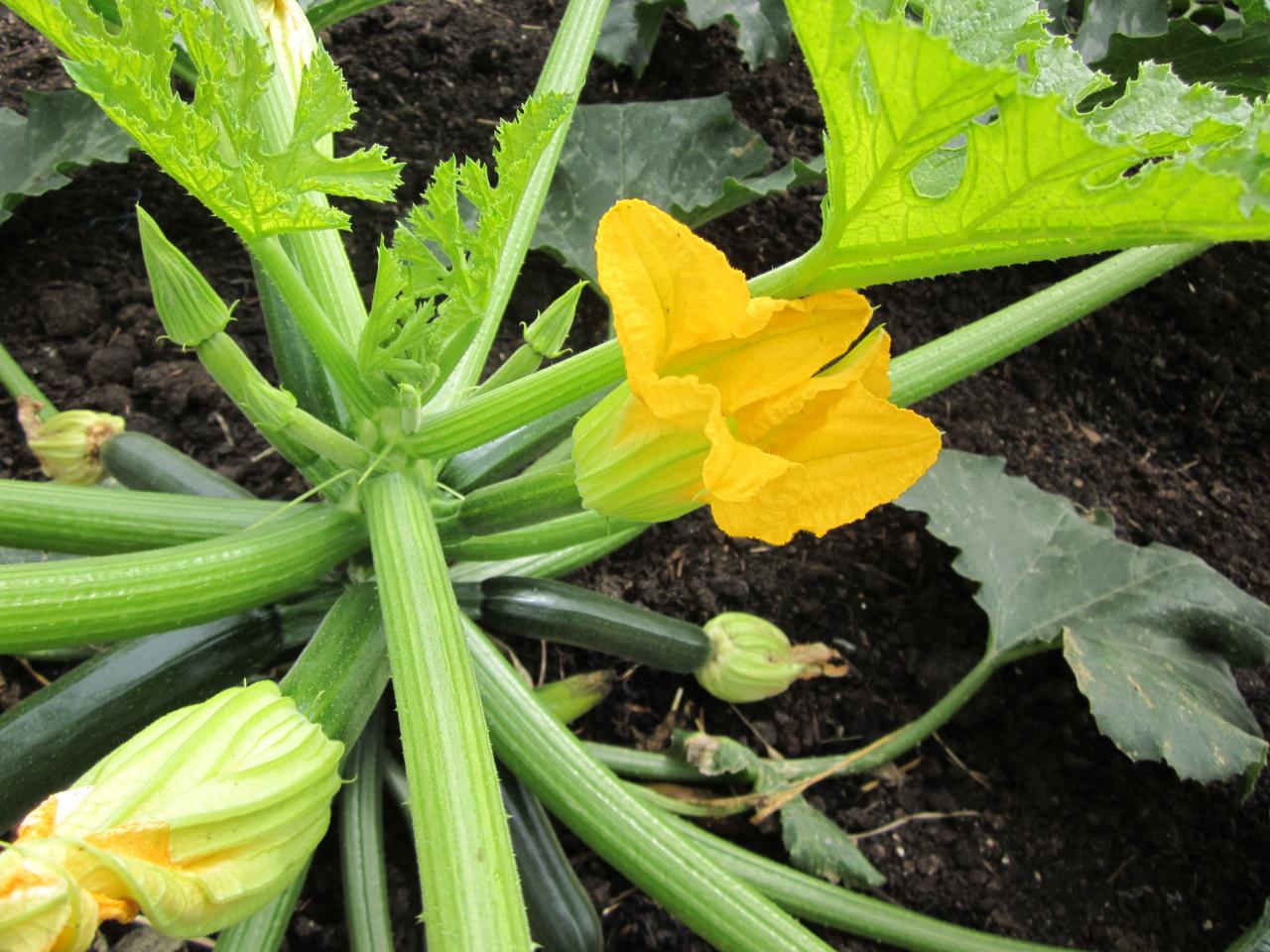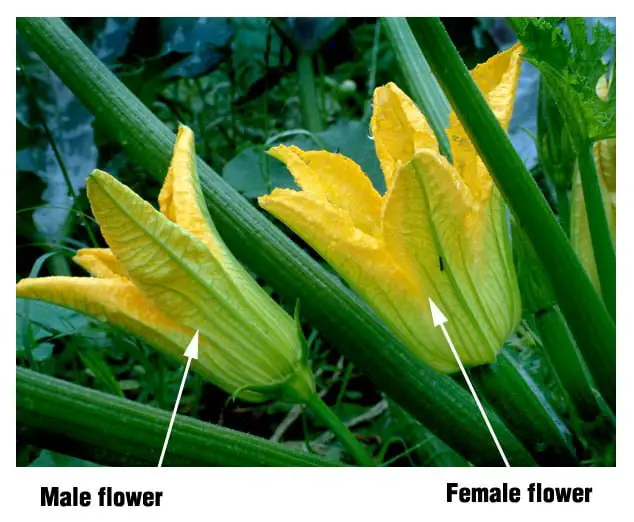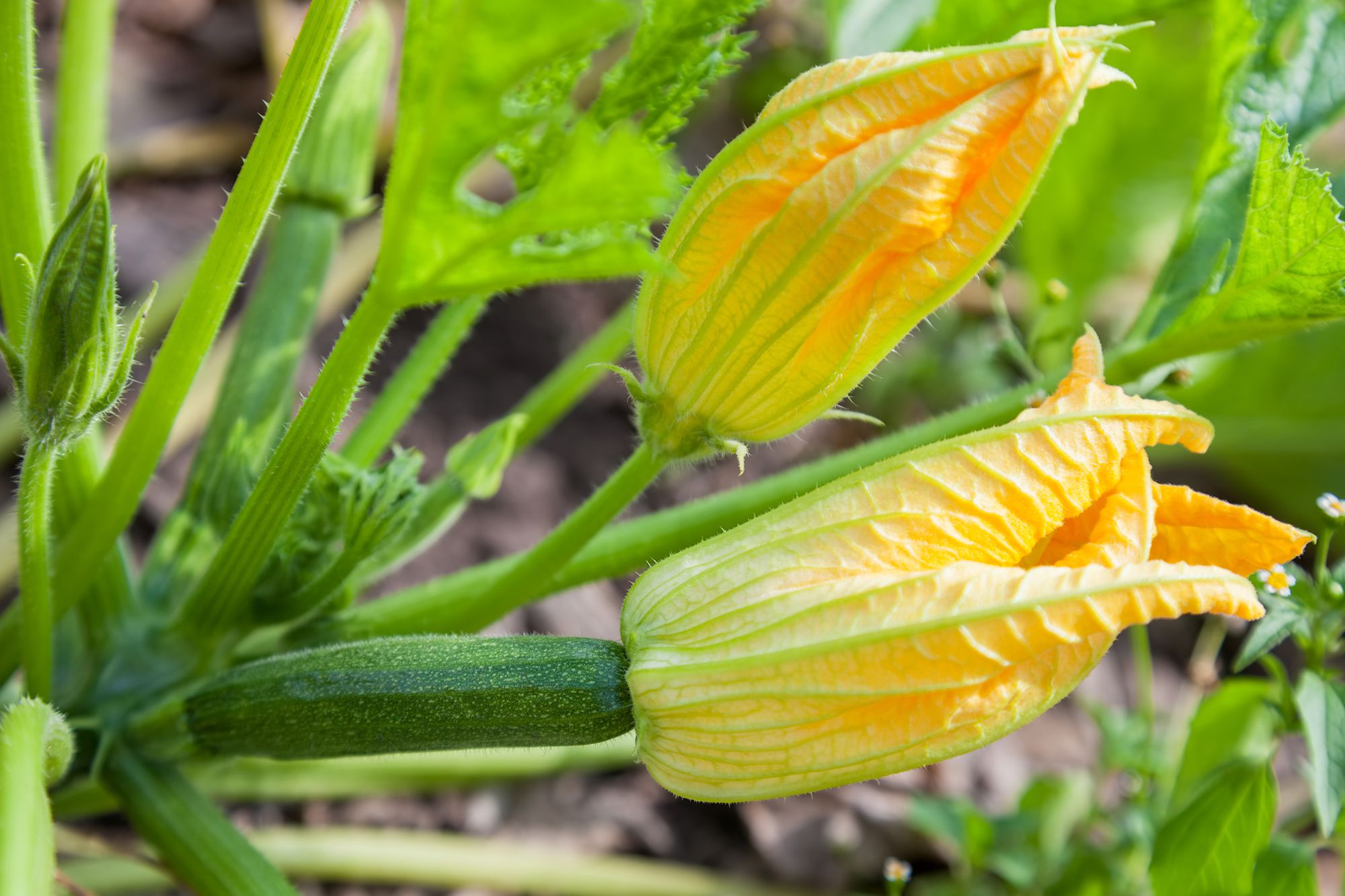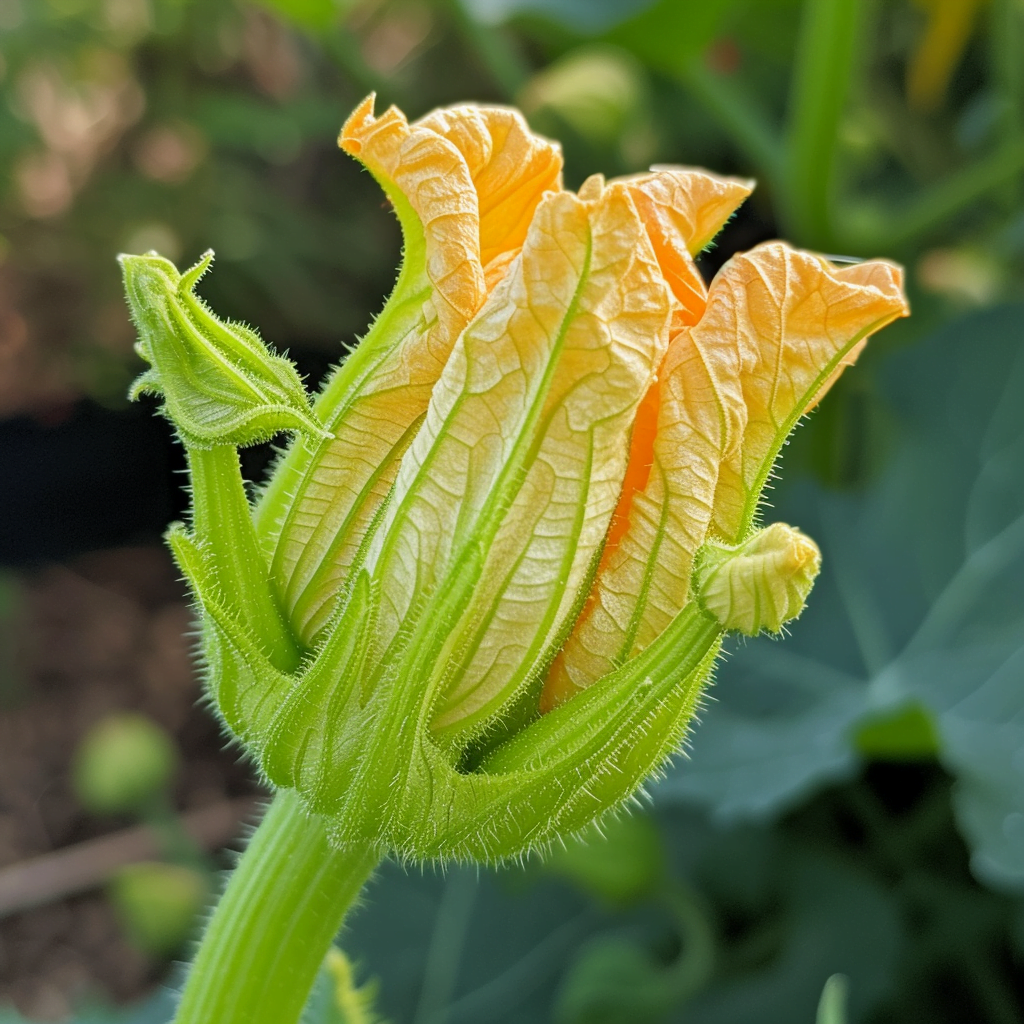Are you a fan of gardening and curious about when do female zucchini flowers bloom? If so, then you’re in luck! In this article, we will explore the fascinating world of zucchini plant physiology and shed light on the specific timing of the blooming process for female zucchini flowers. Whether you’re a seasoned gardener or just starting out, understanding the delicate dance of nature that dictates when these beautiful flowers make their grand appearance can be both intriguing and helpful. So let’s get ready to uncover the secrets behind the blooming of female zucchini flowers and discover the ideal time to expect their vibrant display in your garden.
Female Zucchini Flowers
Understanding Zucchini Flowers
Zucchini (Cucurbita pepo) is a popular summer squash that produces delicate and vibrant yellow flowers. These flowers play a crucial role in the zucchini plant’s reproductive process, leading to the development of the delicious vegetable we enjoy. Understanding the characteristics and requirements of female zucchini flowers is essential for successful gardening and a bountiful zucchini harvest.
Difference between Male and Female Zucchini Flowers
Zucchini flowers can be categorized into two types: male and female. The primary distinction between these flowers lies in their reproductive structures. Male zucchini flowers possess long, slender stems and produce pollen-containing stamens. In contrast, female zucchini flowers have a distinguishable swollen fruit structure, referred to as the ovary, attached to the base of the flower. It is within this ovary that the zucchini vegetable develops once the flower gets successfully pollinated.
Importance of Female Zucchini Flowers
Female zucchini flowers are of utmost importance in the zucchini plant’s life cycle. They are responsible for fruit production and the continuation of the species. Without the presence of female flowers and subsequent successful pollination, zucchinis would not form. Therefore, ensuring the proper blooming and health of the female flowers is crucial in producing a plentiful zucchini harvest.
Bloom Time of Female Zucchini Flowers
Factors Affecting Bloom Time
Several factors influence the bloom time of female zucchini flowers. One significant factor is the zucchini variety being grown, as different cultivars may have slight variations in their flowering patterns. Additionally, environmental conditions play a crucial role. Adequate sunlight, temperature, and proper nutrition are essential elements for promoting timely flower blooming.
Bloom Time in Different Climates
The bloom time of female zucchini flowers can vary depending on the climate. In warmer regions, where the growing season is longer and temperatures remain consistently high, zucchini plants may start producing female flowers earlier and continue to do so throughout the season. In cooler climates, the bloom time may be slightly delayed, with female flowers appearing a few weeks after the plants have established.
Average Bloom Time for Female Zucchini Flowers
On average, female zucchini flowers typically bloom within four to six weeks after sowing the seeds. However, it’s important to note that this time frame can vary depending on the aforementioned factors, as well as the specific growing conditions and care provided to the zucchini plants.

Recognizing Female Zucchini Flowers
Distinctive Features of Female Zucchini Flowers
Identifying female zucchini flowers among the plethora of leaves and vines can be relatively easy once you know what to look for. Female flowers have a robust and recognizable structure that sets them apart from their male counterparts. The ovary, which resembles a miniature zucchini, is attached to the base of the flower and is a distinctive characteristic of the female flower.
Identifying Female Flowers from Male Flowers
Distinguishing between male and female zucchini flowers is essential, especially for hand pollination techniques and effective cultivation. Typically, male flowers appear before female flowers and are often more abundant. Male flowers have long, thin stems without an attached swollen ovary. The absence of the ovary is the key feature that helps differentiate female flowers from males.
Early Signs of Blooming Female Flowers
In the initial stages of blooming, female zucchini flowers may appear as closed buds. As they progress towards blooming, the petals gradually unfurl, revealing the vibrant yellow color and the ovary at the flower’s base. Observing these early signs is vital to determine the optimal time for pollination and ensuring successful vegetable production.
Optimal Conditions for Female Zucchini Flower Blooming
Sunlight and Temperature Requirements
Female zucchini flowers thrive in warm and sunny conditions. They require a minimum of six to eight hours of direct sunlight each day to promote healthy growth and blooming. Additionally, temperatures between 70°F (21°C) and 90°F (32°C) are considered ideal for the optimal blooming of female flowers.
Soil and Nutritional Needs
To support the healthy development and blooming of female zucchini flowers, it is essential to provide nutrient-rich soil. Ensure the soil is well-draining, loose, and rich in organic matter. Incorporating compost or well-balanced fertilizers before planting will help meet the nutritional requirements of the zucchini plants.
Watering and Moisture Levels
Maintaining adequate moisture levels in the soil is crucial for the blooming of female zucchini flowers. Consistent and regular watering is necessary, especially during dry spells or periods of high heat. However, it is equally important to avoid overwatering, as this can lead to root rot and other water-related issues. Striking a balance between proper hydration and preventing waterlogged soil is crucial for the health and blooming of the female flowers.

Pollination of Female Zucchini Flowers
Natural Pollination Process
In nature, zucchini flowers are primarily pollinated by bees and other pollinators. Female flowers produce a sticky substance called nectar to attract these beneficial insects. As the bees visit the flowers in search of nectar, they inadvertently transfer pollen from male flowers to the female flowers, enabling fertilization and fruit development.
Importance of Pollinators
Pollinators play a vital role in the successful pollination of female zucchini flowers. They facilitate the transfer of pollen, ensuring that the ovary within the female flower is fertilized. Without the help of pollinators, zucchini plants may fail to produce fruits or produce misshapen and underdeveloped vegetables.
Hand Pollination Techniques
In situations where natural pollination may be inadequate or if pollinators are scarce, hand pollination can be an effective alternative. Hand pollination involves manually transferring pollen from the stamens of male flowers to the stigma of female flowers. This can be done using a small brush or by gently removing the petals of the male flower and rubbing the central part against the stigma of the female flower.
Maintaining the Health of Female Zucchini Flowers
Pest and Disease Prevention
To ensure the health and blooming of female zucchini flowers, it is crucial to implement pest and disease prevention measures. Regularly inspect the plants for signs of pests such as aphids, cucumber beetles, or squash bugs, and take appropriate action if necessary. Additionally, practicing good garden hygiene, such as removing fallen leaves and debris, can prevent the spread of diseases and help maintain the overall health of the zucchini plants.
Fertilization and Fertilizer Timing
Proper fertilization plays a vital role in promoting the blooming and overall health of female zucchini flowers. Incorporate well-balanced fertilizers or compost into the soil before planting to provide essential nutrients. Additionally, applying a side dressing of nitrogen-rich fertilizer halfway through the growing season can encourage continuous flower production.
Regular Inspection and Care
Consistently monitoring the health and progress of female zucchini flowers is essential. Regularly inspect the plants for any signs of stress, nutrient deficiencies, or diseases. Promptly address any issues by providing appropriate care, such as adjusting watering schedules, applying organic remedies, or seeking professional advice if needed.

Harvesting Time for Zucchini
Determining When to Harvest
Knowing the optimal harvest time is key to enjoying zucchinis at their peak flavor and tenderness. Zucchinis are best harvested when they are firm, glossy, and reach a length of 6 to 8 inches (15 to 20 cm). It is important not to wait too long to harvest, as overripe zucchinis can become fibrous and less flavorful.
Effects of Delayed Harvesting
Delaying the harvest of zucchinis can have several negative effects. Overripe zucchinis can grow larger and tougher, making them less desirable for consumption. Additionally, leaving overripe zucchinis on the plant can divert the plant’s energy away from producing new flowers and fruits.
Proper Harvesting Techniques
When harvesting zucchinis, it is recommended to use sharp gardening shears or a knife to avoid damaging the plant. Carefully cut the stem about one inch above the zucchini, ensuring a clean cut without bruising or tearing the vegetable or the plant. Promptly remove harvested zucchinis from the garden to encourage continuous blooming and plant productivity.
Post-Blooming Care for Zucchini Plants
Removal of Spent Flowers
After the blooming period, female zucchini flowers may begin to wither and die. To promote continuous blooming and encourage the development of new female flowers, it is essential to remove these spent flowers promptly. Simply pinch or snip off the withered flowers, taking care to prevent any damage to the plant or the surrounding buds.
Promoting Continuous Blooming
To encourage the continuous blooming of female zucchini flowers, provide ongoing care and maintenance to the plants. This includes regular watering, proper fertilization, and protection from pests and diseases. Maintaining a healthy and thriving zucchini plant will help ensure a steady supply of female flowers and a successful harvest throughout the season.
Supporting Plant Health and Growth
In addition to regular care, supporting the overall health and growth of the zucchini plants is crucial for the continued blooming of female flowers. This can be achieved through regular pruning to remove any excessive foliage that may block sunlight or hinder air circulation. Additionally, providing adequate support, such as trellising or using stakes, can help prevent the plant from sprawling and improve air circulation, reducing the risk of diseases.
Length of Blooming Period
Duration of Individual Female Flower Blooming
Female zucchini flowers typically have a relatively short individual blooming period. On average, each female flower blooms for approximately one to three days. During this time, the flower is receptive to pollination before the petals fade and the ovary begins to wither.
Total Duration of Blooms Throughout the Season
Despite the relatively short blooming period of each individual female flower, a well-maintained zucchini plant can produce a continuous supply of flowers throughout the growing season. With proper care and optimal growing conditions, zucchini plants can produce new female flowers every few days, ensuring a steady harvest of zucchinis throughout the season.
Factors Affecting Blooming Length
Several factors can influence the length of the blooming period for female zucchini flowers. Environmental conditions, such as temperature fluctuations and extreme weather events, can affect flower longevity. Additionally, the overall health and care provided to the zucchini plants, including proper watering, fertilization, and the prevention of pests and diseases, can also influence the duration of blooming.
Conclusion
Understanding the Blooming of Female Zucchini Flowers
By understanding the characteristics, bloom time, and optimal conditions for female zucchini flowers, you can ensure a successful zucchini harvest. Recognizing these flowers and providing appropriate care, including proper pollination and maintenance, will contribute to healthy plants and an abundant supply of zucchinis.
Caring for Female Zucchini Flowers
Maintaining the health of female zucchini flowers through pest prevention, fertilization, and regular inspection is key to their successful blooming and fruit production. By providing the optimal environment, including adequate sunlight, proper soil nutrition, and sufficient hydration, you can maximize the potential of your zucchini plants.
Ensuring a Successful Zucchini Harvest
Through careful observation, timely harvesting, and post-blooming care, you can support the ongoing blooming of female zucchini flowers and ensure a continuous and fruitful harvest. By understanding the factors that influence blooming length and providing the necessary care throughout the growing season, you can enjoy an abundant supply of zucchinis from your garden.



